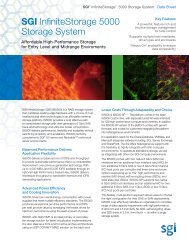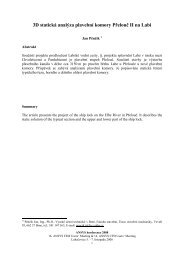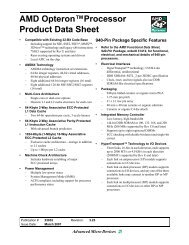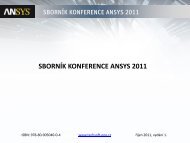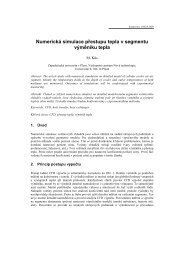Wind Turbine
Wind Turbine
Wind Turbine
You also want an ePaper? Increase the reach of your titles
YUMPU automatically turns print PDFs into web optimized ePapers that Google loves.
chemical<br />
The sparger assembly<br />
For a recent project, several simulations of the reactor<br />
were performed in an attempt to reduce the pressure<br />
difference through the sparger holes that had caused<br />
an overload problem on some of the compressors. In<br />
order to accomplish the goal without any loss in productivity,<br />
a decision was made to enlarge the sparger<br />
hole sizes. Changing the sparger hole sizes had to be<br />
carefully studied, however, because new problems might<br />
be introduced in the process. Using FLUENT, several aspects<br />
of the planned changes that would be critical to successfully<br />
achieving the goal were checked. First, the flow<br />
in the sparger itself was precisely investigated for various<br />
hole sizes. The results were used to assess the distribution<br />
of the gas flow rate per hole, and to test whether<br />
the pressure difference for the gas exiting through the<br />
holes was properly adjusted. Next, the liquid flow pattern<br />
in the reactor was calculated. These results were<br />
used to check for possible problems in the mixing patterns<br />
in the vessel. As a result of this effort, it was found<br />
that by modifying the agitator system, a better mixing<br />
pattern could be achieved. The revised liquid solution<br />
was then used as the basis for the gas sparging calculation,<br />
which was performed using the discrete phase<br />
model (DPM). This calculation was used to ensure that<br />
the hole size proposed in the first phase of the project<br />
would not lead to any unforeseen problems when the<br />
sparger was activated. During this phase of the project,<br />
the underlying assumptions for the DPM were validated,<br />
and the fundamental concepts for bubble formation<br />
by a gas emitted from a sparger hole in a liquid were<br />
investigated.<br />
As a result of the project work, the most appropriate<br />
hole sizes for the spargers was chosen that would<br />
satisfy the process goals while introducing no unexpected<br />
problems in reactor operation. The results also helped<br />
identify ways to modify other aspects of the agitating<br />
system so that better gas dispersion could be obtained.<br />
All of the ideas have since been applied in the field, and<br />
the reactor is now operating successfully. ■<br />
Path lines illustrate some of the bubble trajectories<br />
The gas flow<br />
in the sparger<br />
Fluent NEWS spring 2002 11



